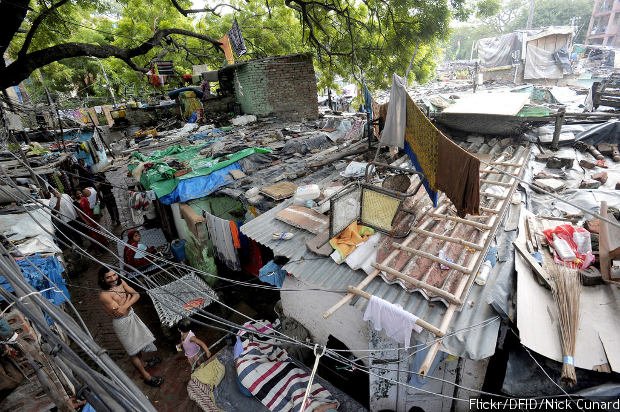COVID-19 Threat: Bhubaneswar Slums Waiting To Explode?

Bhubaneswar: With coronavirus cases nearing 300-mark in the Odisha capital, the Bhubaneswar Municipal Corporation (BMC) has a tough task ahead to contain the spread of the virus particularly in the hundreds of slums dotting the city.
The unplanned and unauthorised houses, the demographic profile, unhygienic conditions, lack of civic amenities and limited social awareness make the over 800 slums with around 4 lakh people the most vulnerable areas for penetration and spread of the coronavirus.
In fact, Salia Sahi was the first slum, the biggest in the city, to record a corona positive case. Since then, the virus has spread its tentacles slowly though surely till it contracted 30 persons in the city slums with six alone being reported from Salia Sahi, which is the Bhubaneswar version of Dharavi in Mumbai.
While Subash Nagar slum has reported 7 positive cases, Laxmi Bazaar has nine, Mahima Nagar three, and one each from Baliapata, Bisweswar, Hadabal, Sokharchandi, and Abhiram Basti.
As admitted by COVID observer for Bhubaneswar Anu Garg, the spread of the coronavirus cannot be checked in the slums due to the congestion. Choc-a-bloc houses and unhygienic lifestyle of the people have forced the BMC to disallow home quarantine in the slums. Instead, it has opened institutional quarantine centres.
It has been made mandatory for the people returning from five hotspots districts and outside to the slums to undergo 14-day mandatory institutional quarantine with members of Sachetak committees keep an eye on them.
At a press briefing on June 26, BMC Commissioner Prem Chandra Chadhury had said that slums were being strictly monitored and three to four rounds of active surveillance had already been completed there. “Anyone found to be symptomatic is taken into quarantine and then tested for COVID-19. We don’t want to take any risk and allow for the spread of the virus between detection and testing of a case,” he said.
The BMC has formed a Sachetak committee in each of 60-70 wards and assigned tasks to it on coronavirus. Each committee consists of volunteers, mentors, doctors and prominent persons. A senior municipal officer is in charge of monitoring the works of these committees in five wards.
These members have been trained on symptoms of coronavirus and initial care necessary for the person. They have also been given the kits and thermal scanners. Besides, a WhatsApp group has been formed in each ward for the exchange of information.
Despite such measures, the positive cases spiked with the arrival of migrants, most of whom are residents of the slums, after the lockdown norms were eased. Though the BMC has stoutly ruled out community spread, it has no answer to the source of transmission.
The slums’ population, which has not been profiled till date, worsens the situation for the BMC. Every slum has people of varied professions and belonging to different parts of Odisha as well as other states, which make them vulnerable to the virus contact.
Though the BMC maintains that it has been registering the returnees from hot spots of the state and outside, its knee-jerk reaction to the situation can be well guessed from the fact that it has claimed to have collected more than 500 swab samples from Salia Sahi which has a population of over one lakh. Besides, the civic body has no data on the samples collected from other slums, which have over 20 corona positive cases.
Given the civic condition and lifestyle of the slum people, the monsoon carries the potential of an outbreak of water-borne diseases which will be additional burden factor for the spread of coronavirus and triggering the intensity of the COVID-19 disease.
The BMC and its COVID workforce may be claiming that all is ok, the ground realities present a picture that is far from satisfactory for at least the health experts who apprehend worsening situation ahead.
What Healthcare Professionals Have To Say
Whether there is a community spread at this point is a question that lacks proper evidence to be responded with an affirmative and will only be ascertained when sero-surveillance is completed within these communities but the increasing numbers do signal at a possibility of the same.
This population has always been vulnerable to adverse health outcomes because of the overcrowding which engenders a host of opportunities for transmission of diseases, especially airborne infections like TB, respiratory diseases like COVID-19, pharyngitis and meningitis, scabies and superinfections of the skin. Overcrowded housing also does not allow the practice of social distancing. The use of community toilets also adds to the problem from a COVID-19 situation making transmission easier.

Comments are closed.